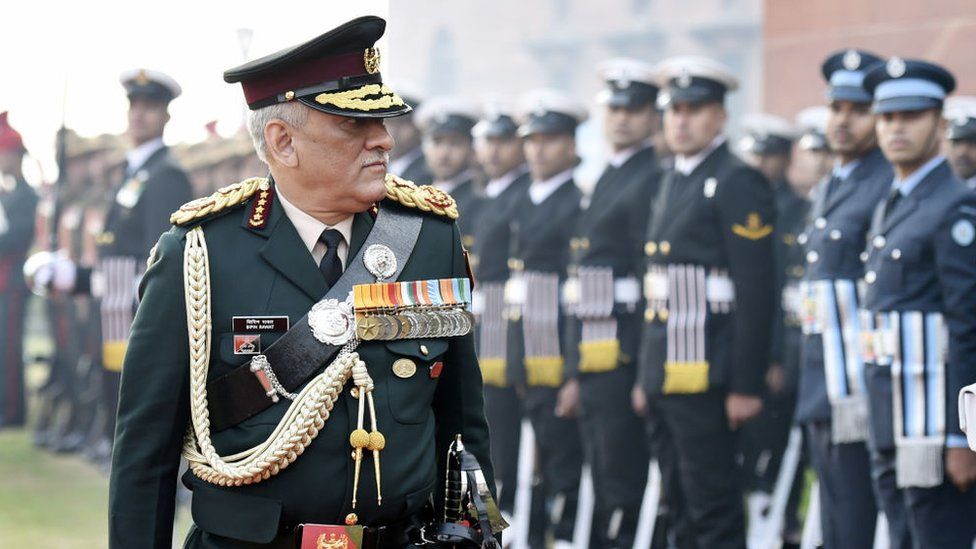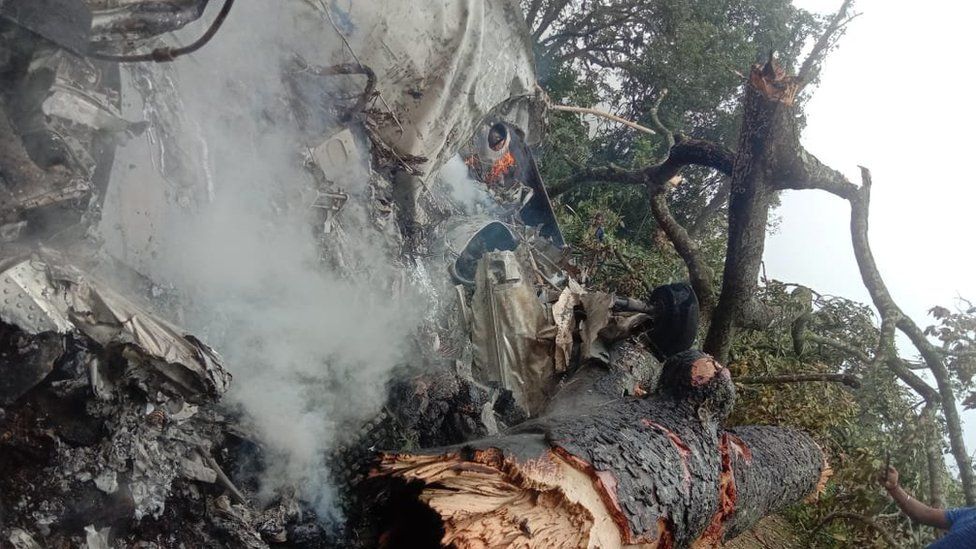General Bipin Rawat, who died in a helicopter crash on Wednesday, was India’s most senior defence official.
He was appointed as the country’s first chief of defence staff (CDS) in 2019, and previously served as the chief of India’s one-million strong army.
The 63-year-old had the reputation of being a tough soldier and an inspiring commander, who sometimes sparked controversy with his comments on political developments.
Gen Rawat was born on 16 March 1958 in the northern Indian state of Uttarakhand.
His father was a lieutenant general in the Indian Army and his mother was the daughter of a politician.
A top student during his military training, Gen Rawat was awarded the “Sword of Honour” at the National Defence College and the Indian Military Academy.
He also completed a training course with the United States Army Command and General Staff College at Fort Leavenworth, Kansas.
 IMAGE SOURCE,GETTY IMAGES
IMAGE SOURCE,GETTY IMAGESHe joined his father’s military unit, 11 Gorkha Rifles, in 1978.
After that, he served in several key posts in the army, specialising in high-altitude warfare and counter-insurgency operations.
He was a decorated officer who often commanded units in restive regions in the country.
In the 1980s, as an army colonel, Gen Rawat commanded his battalion along the Line of Actual Control in the north-eastern state of Arunachal Pradesh during a military stand-off with China.
In 2015, when he was in charge of the 3 Corps, Gen Rawat initiated India’s first officially declared surgical strikes on foreign territory when he sent troops of a para-commando battalion to attack Naga rebels inside Myanmar after an ambush on Indian troops.
In the same year, he survived a helicopter crash in the north-eastern state of Nagaland.
 IMAGE SOURCE,ANI
IMAGE SOURCE,ANIIn 2016, he took over as India’s 27th Indian army chief, superseding two officers who were senior to him.
The following year, India sparked an international controversy when it awarded a medal to an army officer who tied a civilian to the front of his jeep in Indian-administered Kashmir.
Gen Rawat had defended the move, describing the officer’s actions as an “innovation” in a “dirty war”.
“People are throwing stones at us, people are throwing petrol bombs at us. If my men ask me what do we do, should I say, just wait and die? I will come with a nice coffin with a national flag and I will send your bodies home with honour. Is it what I am supposed to tell them as chief? I have to maintain the morale of my troops who are operating there,” he said.
In 2019, the government of Narendra Modi set up the position of CDS to improve coordination between India’s army, navy and air force.
The new chief also had control over funding for the military.
When he took charge, Gen Rawat faced criticism over his alleged closeness to the ruling Bharatiya Janata Party (BJP). He always denied these accusations.
His critics said some of his statements went against the “apolitical” tradition of India’s military.
He once described the rise of the Muslim-dominated All India United Democratic Front party in Assam as a national security threat, which led minority leaders to accuse him of “parroting” the BJP’s line.
In recent months, the general was focusing on modernising the military.
Under Gen Rawat’s leadership, the process of military integration had taken off, though integrated theatre commands hadn’t yet been formed for the three forces.



No comments:
Post a Comment
Note: only a member of this blog may post a comment.